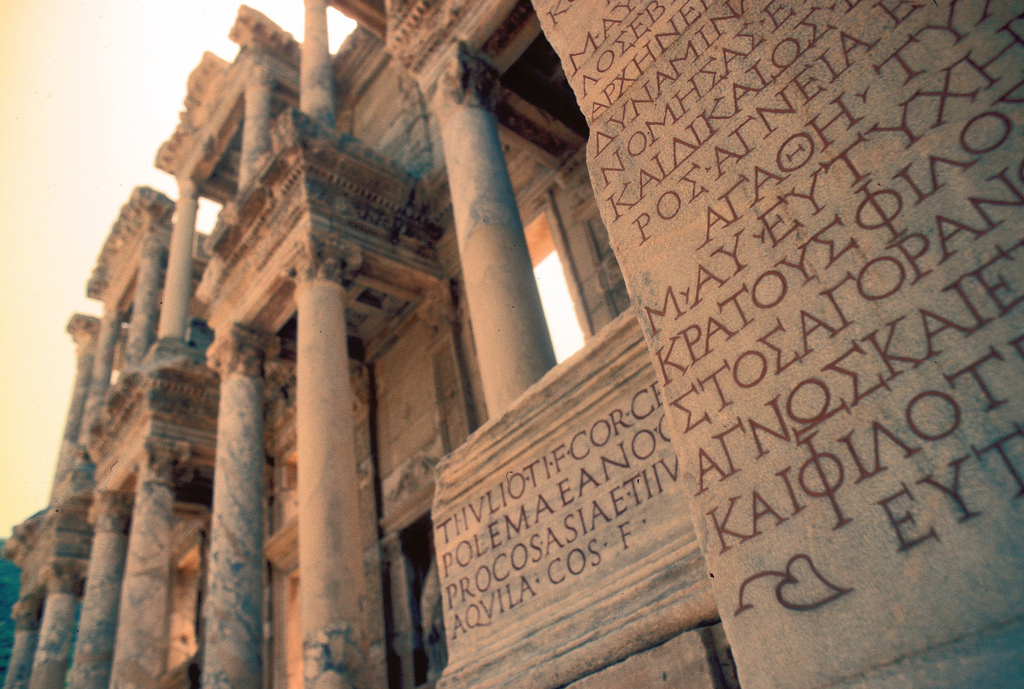
Description: Greek Writing
Image copyright: http://www.flickr.com/photos/alexconnock/4955959045/

SInce Athens was the center of trade at the time, a way that the merchants would wiegh out items to determine their cost, the Greeks made lead weights to signify how much that item wieghed. In order to tell the different weights apart, the Greeks also made different markings on the weights. For example, a D carved on the top of the weight meant approximately 25 grams, a long rectangle carved onto the weight meant 53 grams, a Y carved on the weight meant 86 grams, 2-3 dots drilled on the bottom of the weight meant around 142 grams, a triangle carved on the weight meant 980 grams, and a triangle stamped on the weight meant around 104 grams. If I were in those times, I think I would get some of those symbols mixed up.

With this, not only did the merchants have lead weights to help determine the cost, but they also had a type of measuring cup. These containers were made for a specific type of food to measure. For instance, they had a seperate cup for measuring nuts, dates, and beans. They were very serious about keeping the measurements up to the standard, and if they were not exact, they would distroy that container. The way they did things back then is not too different from what we use today.

The way the Ancient Greeks measured long distances was by using a schoinion (σχοινίον in Greek). This was a cord and was used as a standard length, measuring 100 cubits long. In our terms now, a cubit is about 18 inches, which would make the schoinion 150 feet long. To measure something a bit smaller, the Greeks made 8 knots on each schoinion, therefore being able to measure all sorts of different lenghs using the same instrument. A Greek person even knew that the cord would shrink during humid times, making the measurements inaccurate. To fix this problem, they decided to smear wax all over the schoinions, which made them not shrink during changes in the humidity. They used this instrument for measuring almost anything, from the distance between two objects to all of their amazing architecture. As you can see, the ancient Greeks used a bunch of different things to measure with. These were just a few of the more common ways to measure different weights, lengths, and distances. Now you know.

